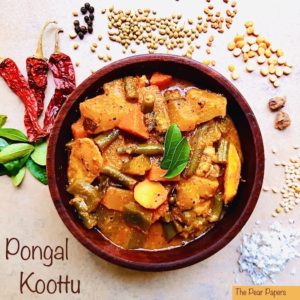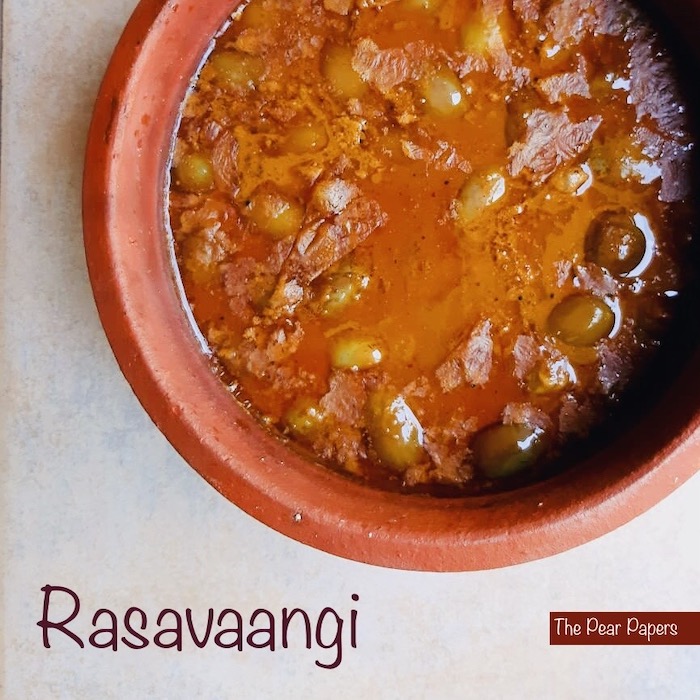
Rasavaangi
A traditional gem from my maternal grandma’s kitchen, Rasavaangi is a tamarind based gravy dish made with baby brinjals and Indian spices. During my annual school vacations, my brother and I enjoyed visiting my maternal grandparent’s house for many reasons. One of the reasons was to enjoy my grandmom’s awesome cooking. She was such an affectionate, simple person and an excellent cook. I was very fortunate to be able to spend many good times with her during my growing years. This Rasavaangi made with baby brinjals was one of her signature dishes and I’m happy to share her recipe with you all.
Ingredients
Baby brinjals – 15 to 20
Tamarind – small lime sized (if using tamarind paste, then take 1 1/2 tbsp)
Chana dhal – 1 1/2 tbsp
Urad dhal – 1 tsp
Coriander seeds – 3 tbsp
Dry red chilly – 3 (or to taste)
Kashmiri dry red chilly – 2
Sesame seeds – 1 tbsp
Fenugreek seeds – 1 tsp
Uncooked rice – 1 tsp
Asafoetida – 1 tsp
Cooking sesame oil – 3 1/2 tbsp
Mustard seeds – 1 tsp
Curry leaves – few leaves
Turmeric powder – 1 tsp
Salt – 1 tsp (or to taste)
Water – 600-700 ml
Jaggery/brown sugar – 1 tbsp
Yield
Serves 5
Prep time
15 mins
Cook time
30 mins
Method
1) Clean the baby brinjals and remove the green stem. Slit them vertically like a ‘+’ until 3/4ths deep (don’t cut till the end because the brinjals need to be full, see picture). After slitting each brinjal put it in a bowl of water. Continue like this until you slit all the brinjals and place them in water. Set aside.
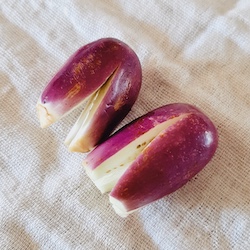
2) Boil tamarind in 200 ml water, allow it to cool and then squeeze to get thick tamarind extract. Set this aside. If you are using tamarind paste, skip this step.
3) In a wide pan, dry roast rice and fenugreek seeds together on low heat. Fry until fenugreek turns golden. Set aside. Add sesame seeds to the same pan and dry roast until golden. Add the roasted sesame seeds to the roasted fenugreek and rice.
4) In the same kadai dry roast chana dhal, urad dhal, coriander seeds and the chillies together until the dhals turn golden. Transfer this roasted mixture to the sesame seeds and fenugreek. Add asafoetida to this and grind all the roasted ingredients to a coarse powder. Set aside. This is your rasavaangi spice mix powder.
5) In the same kadai, heat 3 tbsp sesame oil and add mustard seeds. Let the seeds splutter. Now add the curry leaves and turmeric powder. Give it a quick stir and add the slit brinjals. Add 1/2 tsp salt and mix gently. Cover the pan and leave on low heat until the brinjals are half cooked.
6) Open the pan now and add the tamarind extract/paste. Add the remaining salt for the rasavaangi, jaggery and 500 ml water (add around 650 ml water if using tamarind paste). Mix once without breaking the brinjals. Cover the pan again and let it boil for 5-7 mins on medium heat.
7) Now open the pan, simmer the heat and let it boil for 2 more mins. The oil we added initially will start floating on the surface now. At this stage add the ground rasavaangi spice powder. Mix gently and allow it to boil for 2 to 3 mins. The rasavaangi will thicken and become aromatic. Finally, drizzle 1/2 tbsp sesame oil on top and switch off the heat. Rasavaangi is ready to be served. Enjoy with hot steamed rice, any dry curry and pappad.
Notes
- My grandmom used to make Rasavaangi with baby brinjals. As alternatives, I’ve made this dish with shallots, brussel sprouts and even tubers like cubed sweet potato and yam. The main tastemaker in rasavaangi is the ground spice mix.
- Sesame oil brings out the maximum flavour in dishes where tamarind is the base. So I suggest to use sesame oil for dishes like Rasavaangi, Puliyodharai, Sambar, Vathakuzhambu and Milagu kuzhambu.
Beginner’s tips
- Fry all ingredients for the spice mix in minimum heat. Take time to roast slowly, so that the ingredients fry completely without getting charred. Moreover, slow roasting helps in releasing the natural aroma of each ingredient and enhance the overall taste of the dish.


You May Also Like
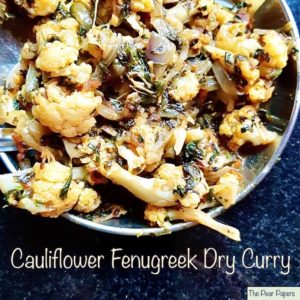
Cauliflower Fenugreek Dry Curry
November 21, 2021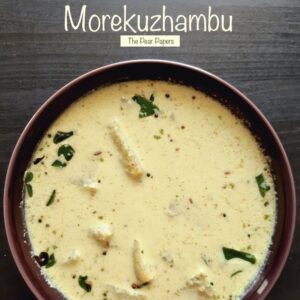
Morekuzhambu
June 17, 2023